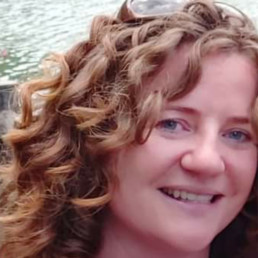
Written by Jess Gosling
An experienced international Early Years teacher, blogger and writer. She is currently writing a book for international teachers, 'Becoming an International Teacher'.
I am currently in my ninth year as an international teacher, and this article was written when I was working in a school with mostly local children in Taiwan. The problem I aimed to solve then was how to showcase and embed diversity and inclusion into our classroom environment.
Therefore, I have developed, and continue to develop here in Poland, a series of ways to bring up issues of diversity, gender, disability, and culture in a way that is relevant, informative, and engaging.
These are big topics for EYFS pupils but there are ways to bring them up organically alongside other areas of learning – often using texts to help naturally raise questions and discussions.
Cultural cues
Although in an international school, the children are from a similar ethnicity and therefore notice differences often.
One example of this was when we viewed a speech over which the guest had a strong Spanish accent. A child remarked, ‘that sounds funny’, and laughed.
As a class, we talked through her view. I related the experience to my own, speaking Mandarin with my ‘funny’ accent. I asked in this case if they would laugh at me. The class was in agreement that they would not. We explored the child’s perception and reasons why, overall, we have accents when speaking another language. I encouraged them to instead think about how smart the speaker was using a different language than their own. We created parallels with their own experience, as bilingual learners.
Gender
We have had a few instances where we have challenged and discussed gender as a class.
A boy in my class expressed his love of ‘Frozen’ and the character of Elsa in particular. He frequently leapt up to sing ‘Let it go’. Gradually, other boys have begun to join him. In this context, however, initially, there were some giggles. We unpicked this reaction and talked about how some girls love ninjas and superheroes and does it matter. Reversing the context helped those children understand that we are free to like whatever we like.
In another situation, I was concerned when several of my children were remarking that a new member of my team was a ‘boy’ as she had very short hair. I could see that the staff member was a little upset by the comments, so I stopped the whole class and I asked them to turn and look at the staff member. We do a lot of work on feelings and it was clear that she was upset. The children who had made the comments paused and looked at the floor. In this instance, I asked the class whether calling out gender names as a joke was a nice thing to do. The class, and the particular children involved, decided as a collective it was not. This behaviour was not repeated.
Discussing individuals who have taken different pathways
Integrity forms part of our school’s ‘learner profile’. To develop their understanding of this concept, I showed a recording of ‘We will Rock You’ by Queen and their frontman, Freddie Mercury, to prompt a discussion about him.
I wanted to illustrate how being honest and true to yourself is as important as being honest to other people.
We looked at how he took a different path in life than what he was expected to do, to remain honest with his hopes and dreams as a musician. The children were incredibly engaged in both the music and his life story.
Recognising cultural differences
When texts are selected carefully, they can illustrate a diverse representation of cultures. This includes environments, rituals, clothing, and religions that differ from my students. Following a book share, we discuss any perceived differences and similarities, encouraging questions.
However, it is important these stories show children living around the world, often with similar experiences to the children. One example is ‘The Proudest Blue’ about a little girl’s first day at school experiencing at the same time her sister’s first day wearing a hijab.
The little girl, Faizah, feels so excited for her sister but instead, other children use harsh words which confuses Faizah.
The children are drawn into the book by the fabulous illustrations. They picked apart what was unkind about the situation but also why others’ may make these remarks. Often I find children are not sure why people would say cruel things to point out a difference. We discussed together how certain words can not only affect one individual (Faizah’s sister) but also ripples to others, who hear and see them.
Showing differences, such as disability, as part of the ‘norm’
Furthermore, I endeavour to show texts which show children and adults with disabilities. One such example is ‘Rumble in the Jungle’, which shows a child in a wheelchair. These messages are more discrete as it is not a central aspect of the book. Additionally, I don’t always point them out. As these differences have been already discussed early in the year, I want the children to recognise, as with different racial identities that diversity such as disability is commonplace and part of our lives.

